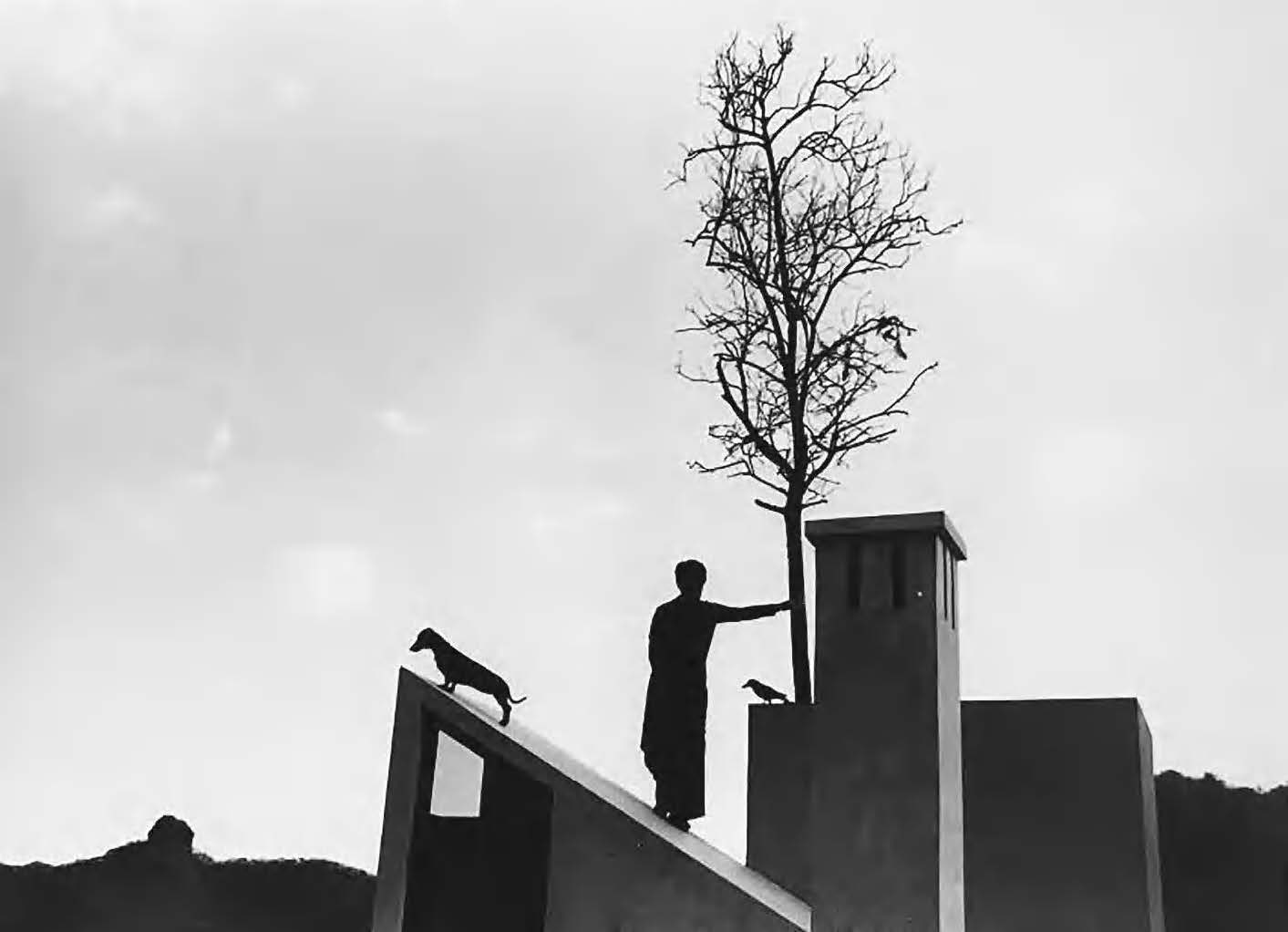Life Paths is an exhibition that offers a detailed revision and critical analysis of the work of Mexican photographer Flor Garduño spanning more than four decades. The display is comprised of images from the artist’s early years to her most recent production, selected and presented in an unprecedented way, in addition to a small percentage of already published images. All the photos selected have been produced as carbon/giclée prints, a technique that permits a rich variety of grayscale tones and formats, which, under the artist’s direct supervision, results in prints of high tonal quality and poetic expression.
Garduño’s solid training included attending the Academy of San Carlos in Mexico City in the second half of the 1970s, learning and sharing empathy with Hungarian photographer Kati Horna, in addition to working with Manuel Álvarez Bravo’s as his assistant in the darkroom. It led her to develop a personal aesthetic around objects and the everyday, but with a rigorous focus on the practice of photography. Her work stands out for its expressive power, arising from her creative freedom hovering somewhere between the real world and fiction.
Life Paths offers a panoramic overview of Flor Garduño’s prolific production, which is not limited to photography, but also explores jewelry design, which resonates and connects with her images. This exhibition invites viewers to rescale the sensibility and profession of the artist, whose dedication offers viewers an appreciation of life.
On Yesterday’s Path, the first section of this exhibition brings the public closer to the journeys that Flor Garduño has undertaken for more than forty years. These trips have enabled her to connect with the life of countless individuals in diverse geographic regions in the Americas, Europe, Asia, and Africa, where her gaze has decoded and transformed these encounters into symbols. Her images feature a tobacco harvester in Chiapas who is transformed into Nature; a peasant in Portugal who symbolizes Death; and Ecuadorian girls and boys embodying Innocence and spontaneity in their smiles. In the record of a street mural in Oaxaca, she gives new meaning to invisibility, the anguished cry, and the feeling of impotence over the situation of missing persons in Mexico.
The artist’s lens evokes relations and imaginary cosmologies through her images. The complex composition of her works suggests assiduous observation aimed at recognizing, remembering, and discovering the nuances that they contain.
The photos in this section offer a detailed record —from an artistic perspective— of human and religious expressions that take place in different communities, cities, and intimate spaces of memory. The images reveal the ritual practices of native peoples of Mexico, Latin America, the United States, Europe, and communities that have survived the oppression of our civilization’s vices. They reveal part of her cosmogony, magico-religious relationships, and the coexistence of animals and traditions in collective memory, which build an essential part of the identity of humankind.
The selection of images in this section centers on the creative process of the photographer, who, with steadfast technique, has developed the virtue of patience and waiting to capture the “decisive moment.” Flor Garduño’s spontaneous gaze has the capacity to stop eternity and dislocate the signs of reality by seizing these fragments of everyday life, turned into landscapes, objects, and unique instants, contained in her images.
Flor Garduño’s extensive work on the female body projects her affective complicity with the women who have accompanied her throughout life. The models in her images are close friends of the artist, persons whose beauty, eroticism, and intimacy are transformed —with the photographer’s gaze— in the tree of crows, an agave flower, or demigoddesses. In these intersections with animality, nature, and distinctive architectures, the photographer calls forth archetypal figures from fantastic, mythical, and dream worlds that permit new ways of approaching the feminine universe.
This section discloses how Flor Garduño’s work engages in a dialogue with other genres of art, such as vanitas, still lifes, “silent natures,”* geometric abstractions, and visual experiments, where the juxtaposition of objects, the play of light, shadow, and contrasting elements in her compositions that combine life and death, the artificial and the living, black and white predominate. The titles of these works find their references, analogies, and metaphors in foundational myths and iconographic references in art history, which the artist revisits and reinterprets.
*Term that refers to the artistic genre of still lifes, which Kati Horna, Flor Garduño’s teacher and accomplice, literally translated from Hungarian as silent natures.
Landscape is a genre in art history that has had various formal and conceptual approaches; the predominant vision resides in the fact that the construction of the landscape depends on the subjective position of the viewer. With this awareness, the artist engages this genre from the dislocation of everyday scenarios that appear affected, subverted, and displaced to the photographer’s fictitious and subjective representations. The composition and intervention of landscape elements resemble a choreography that Flor Garduño performs based on her sensibility, creativity, and at times, her irony.
Flor Garduño discovered her calling for the art of jewelry-making, which she explored from a very young age alongside her mother, learning that the artist has put to best use for many years. This curiosity led her to mold and shape certain formal elements that animate her photos, based on the combination of multiple thematic associations and the use of diverse materials, such as silver, gold, brass, jade, obsidian, mother-of-pearl, and ebony, which she blends in her compositions. The sculptural qualities of the jewelry designed by Flor Garduño —and handcrafted by skilled artisans— forge an autonomy from her images in gelatin silver prints to take on a life of their own as objects.

